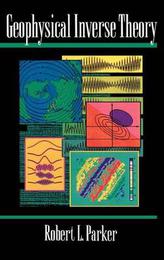
|
Geophysical Inverse Theory
Hardback
Main Details
| Title |
Geophysical Inverse Theory
|
| Authors and Contributors |
By (author) Robert L. Parker
|
| Series | Princeton Series in Geophysics |
|---|
| Physical Properties |
| Format:Hardback | | Pages:400 | | Dimensions(mm): Height 235,Width 152 |
|
| Category/Genre | Earth sciences |
|---|
| ISBN/Barcode |
9780691036342
|
| Classifications | Dewey:550.151545 |
|---|
| Audience | | Professional & Vocational | | Tertiary Education (US: College) | |
|---|
| Illustrations |
90 figs.
|
|
Publishing Details |
| Publisher |
Princeton University Press
|
| Imprint |
Princeton University Press
|
| Publication Date |
5 June 1994 |
| Publication Country |
United States
|
Description
Inverse theory concerns the mathematical techniques that enable researchers to use the available information to build a model of the unknown system or to determine its essential properties. This monograph provides a systematic development of inverse theory at the graduate and professional level that emphasizes a rigorous yet practical solution of inverse problems, with examples from experimental observations in geomagnetism, seismology, gravity, electromagnetic sounding and interpolation. Although illustrated with examples from geophysics, this book has broad implications for researchers in applied disciplines from materials science and engineering to astrophysics, oceanography and meteorology. Parker's approach is to avoid artificial statistical constructs and to emphasize instead the reasonable assumptions researchers must make to reduce the ambiguity that inevitably arises in complex problems. The structure of the book follows a natural division in the subject into linear theory, in which the measured quantities are linear functionals of the unknown models, and nonlinear theory, which covers all other systems.
Author Biography
Robert L. Parker is Professor of Geophysics at the Scripps Institute of Oceanography at the University of California, San Diego.
Reviews"This is [a] very good value for [the] money... The book describes forefront techniques which will be of use to established researchers, and yet, by its very style, the book is highly accessible to beginners. I heartily recommend it, not only to geophysicists, but to any scientist who is concerned with state-of-the art methods of interpreting his or her data."--Geophysical Journal International
|